#The Battle of Antietam Monument
Explore tagged Tumblr posts
Text
#OTD in 1862 – The Irish Brigade suffered over 60% casualties at the Battle of Antietam at an area that came to be known as Bloody Lane.
At the Battle of Antietam, the Irish Brigade led its division in attacking the infamous Bloody Lane. In preparation for the deadly work ahead, Father William Corby, one of the brigade’s chaplains and future president of Notre Dame, rode down the firing line and administered a general rite of absolution to the men. Thomas Meagher advanced to the crest of a hill overlooking a brigade of North…
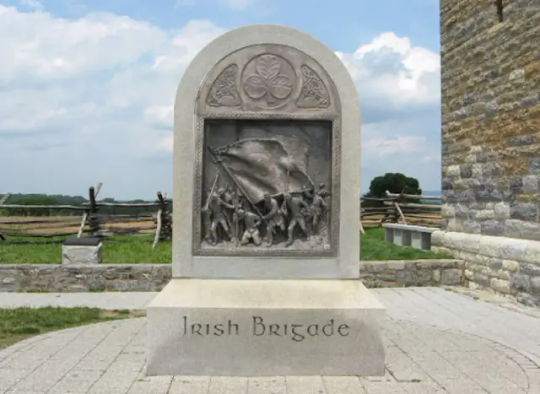
View On WordPress
#69th New York Militia#American Civil War#Bloody Lane#Captain McGee#Confederates#Father William Corby#Fighting 69th#Gen. Israel Richardson#The Battle of Antietam#The Battle of Antietam Monument#The Irish Brigade#Thomas Meagher#Unions
9 notes
·
View notes
Text

Monument to the Fourteenth Brooklyn Regiment, Antietam Battlefield National Monument, Maryland, 2001.
On 17 September 1862 the insurrectionist, terrorist and traitor Robert E. Lee led his Army of Northern Virginia against patriotic Union troops. With nearly 25,000 casualties, it was the bloodiest single battle ever fought on continental US soil. The Brooklyn regiment monument is among many honoring the fallen from various places in the Union. Even on a lovely autumn day, it is a grim place to visit.
#battlefield#monument#national historic park#washington county#maryland#2001#photographers on tumblr#antietam
11 notes
·
View notes
Text
The Battle of Antietam September 17, 1862. This was the bloodiest single day in American history. Men were buried in shallow and mass graves after serving their states valiantly. Southerners refer to This day as the Battle of Sharpsburg. See the TX and GA monuments in the “Cornfield”as well as the Bloody Lane and Burnside Bridge. Never Forget!





#civil war#southerners#confederate#states rights#robert e lee#gravestones#gravestone#confederacy#history#union#virginia#maryland#Sharpsburg#Texas#rebel
18 notes
·
View notes
Text
Exploring Historic Combat Zones Throughout the State
Introduction
There's something classic and engaging about tipping onto a battleground-- a location where background was made, sacrifices were birthed, and traditions were forged. As we embark on this trip of Exploring Historic Battlegrounds Across the State, we'll dive into the stories etched in the planet beneath our feet. These solemn premises are more than simple traveler destinations; they are emotional tips of our past, providing insights into the struggles and victories that shaped our nation.

With each action, you can virtually listen to the murmurs of soldiers that as soon as walked there, really feel the weight of their fearlessness, and acquire a much deeper admiration for the sacrifices made. So order your backpack, shoelace up your boots, and allow's uncover the abundant tapestry of history woven across these battlefields!
Exploring Historical Combat zones Throughout the State
In many states across America, historic field of battles stand as testimony to significant occasions that molded our country. Whether you're drawn to War of independence sites or Civil War battlegrounds, each place narrates full of valiance and suffering. The adventure begins at these famous places where every rock has a story to tell.
Why Visit Historical Battlefields?
Before we venture further right into certain locations, allow's consider why these websites are so appealing:
Historical Significance: Each combat zone is steeped in background. Recognizing what took place there can grow your recognition for current social structures. Educational Opportunities: Many battlegrounds offer interesting scenic tours led by well-informed guides that bring background alive. Cultural Reflection: These websites reflect cultural values and disputes that have actually advanced over time. Scenic Beauty: Frequently situated in attractive setups, battlegrounds can give not just historical yet likewise all-natural beauty. Planning Your Battleground Journey Choosing Your Destination
When it pertains to checking out historic field of battles across the state, selecting your location is important. Right here are some preferred ones you might want to take into consideration:

Gettysburg National Armed force Park (Pennsylvania) A pivotal website throughout the American Civil War. Antietam National Battleground (Maryland) Known as one of the bloodiest days in American history. Bunker Hillside Monolith (Massachusetts) The initially major battle of the American Revolution. Fort Sumter National Monument (South Carolina) Where the very first shots of the Civil Battle were fired.
Each field of battle has special features that make it deserving of exploration.
youtube
youtube

youtube
Timing Your Visit
History awaits nobody! Take into consideration going to during special events like reenactments or memorial events for an improving experience. Springtime and autumn frequently use enjoyable weather arkansasnewsnetwork.com Arkansas rundown for exterior exploration.
The Significance o
1 note
·
View note
Text
Sons of Confederate Veterans to Honor Local Hero (VA)
Help Dixie Defeat Big-Tech Censorship! Spread the Word! Like, Share, Re-Post, and Subscribe! There’s a lot more to see at our main page, Dixie Drudge! (Brunswick Times-Gazette) – The Old Brunswick Camp 512 – Sons of Confederate Veterans have erected a monument for Brunswick County native Brig. General William Edwin Starke who was killed at the Battle of Antietam in Sharpsburg, Md. The monument…

View On WordPress
0 notes
Text
Historical Landmarks and Heritage USA

Exploring historical landmarks and heritage sites in the United States can be a fascinating niche for YouTube content creators. Here are some ideas for content within this sub-niche
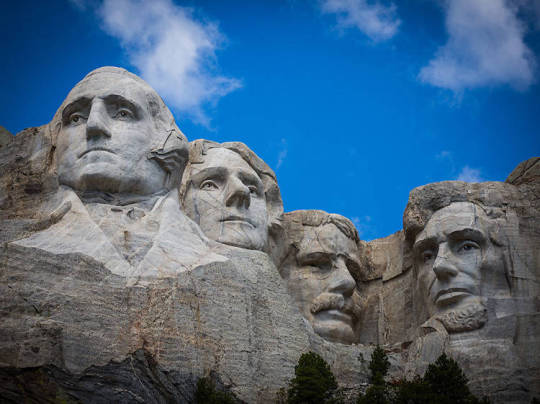
Virtual Tours of National Parks: Provide immersive virtual tours of iconic national parks in the United States, such as Yellowstone, Grand Canyon, Yosemite, and Acadia. Highlight the natural beauty, wildlife, and geological wonders of these protected areas.
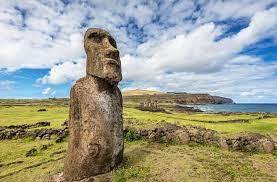
Historic Sites and Monuments: Visit and document visits to famous historical landmarks and monuments across the country, such as the Statue of Liberty, Mount Rushmore, Independence Hall, and the Alamo. Share insights into the history, significance, and architectural features of these sites.
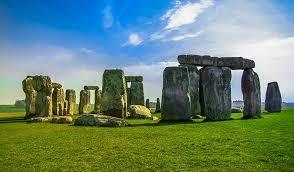
Colonial Era and Revolutionary War Sites: Explore the East Coast's rich colonial history by visiting sites like Colonial Williamsburg, Jamestown Settlement, and Boston's Freedom Trail. Discuss the events leading up to the American Revolution and the legacy of the Founding Fathers.
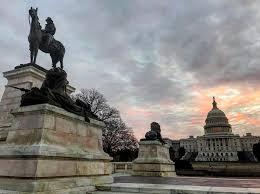
Civil War Battlefields and Museums: Tour Civil War battlefields, such as Gettysburg, Antietam, and Vicksburg, and discuss the strategies, key battles, and significant figures of the conflict. Visit Civil War museums and artifacts collections to delve deeper into this pivotal period in American history.
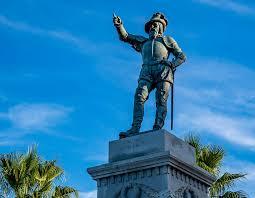
Industrial Revolution Landmarks: Visit industrial revolution landmarks and heritage sites, such as Lowell National Historical Park, Thomas Edison National Historical Park, and the Henry Ford Museum. Explore innovations in technology, transportation, and manufacturing that shaped American industry.
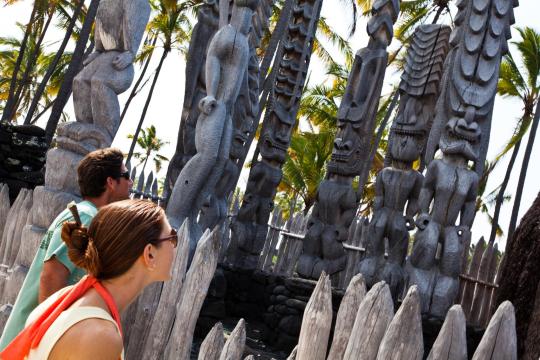
mmigration and Ellis Island: Document visits to Ellis Island and other immigration museums to explore the immigrant experience in America. Share stories of immigrants' journeys, cultural diversity, and contributions to the nation's growth and development.
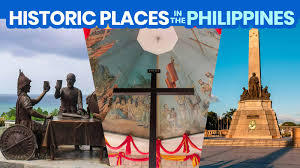
Civil Rights Movement Sites: Visit sites associated with the Civil Rights Movement, including the Martin Luther King Jr. National Historic Site, Selma's Edmund Pettus Bridge, and the National Civil Rights Museum. Discuss the struggle for racial equality, landmark events, and the ongoing fight for social justice.

Presidential Libraries and Museums: Tour presidential libraries and museums dedicated to the lives and legacies of past U.S. presidents, such as the Ronald Reagan Presidential Library, the John F. Kennedy Presidential Library, and the Abraham Lincoln Presidential Library and Museum.
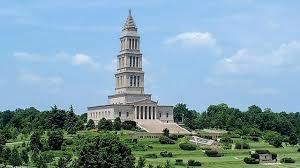
Historic Trails and Scenic Byways: Follow historic trails and scenic byways, such as the Lewis and Clark Trail, the Oregon Trail, and the Blue Ridge Parkway. Share travel tips, scenic views, and insights into the people and events that shaped American history.
0 notes
Photo
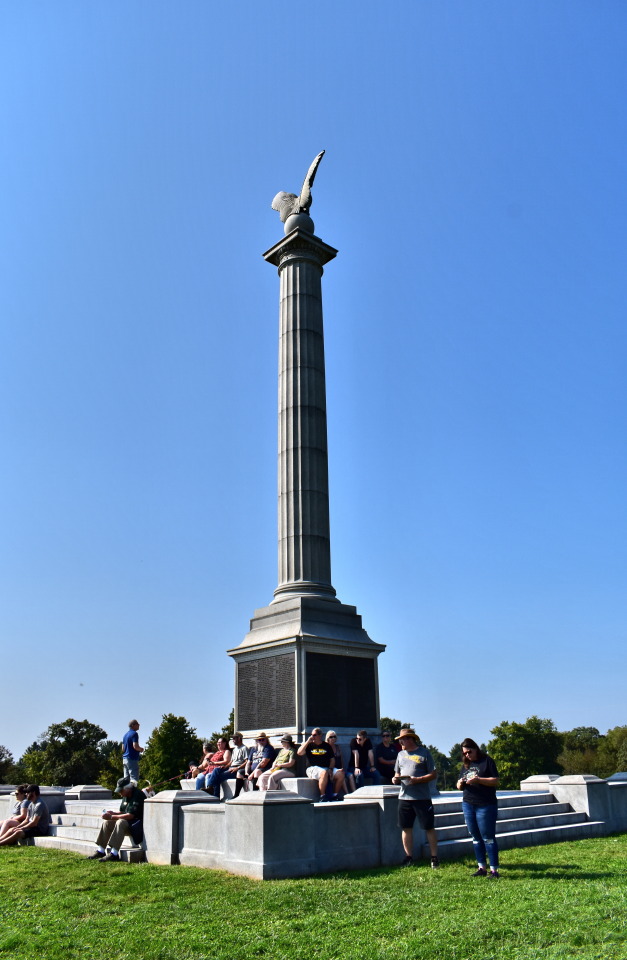
160th Anniversary of the Battle Of Antietam. The Bloodiest Day in American History. Small crowd at the State of New York Monument waiting for a Civil War Cannon demonstration by Confederate Reenactors,
https://en.wikipedia.org/wiki/Battle_of_Antietam
https://www.nps.gov/anti/index.htm
https://antietam.stonesentinels.com/monuments/new-york/state-new-york/
#Maryland#Antietam#Antietam National Battlefield#160th Anniversary of the Battle of Antietam#Bloodiest day in American History#State of New York Monument#Civil War Monument#My Photography#Photographers on Tumblr#American Civil War#Civil War Battlefield#Civil War
0 notes
Note
May you give some tips on how to write about mid-nineteenth century and early twentieth century ?? Sorry for the inconvenience and thanks if there is an answer or not xd 😅 greetings and take good care :) :D
Okay, so I only really know about AMERICAN mid-nineteenth and early 20th century history, so I hope that’s what you mean!!
How to Write About The Mid-Nineteenth/ Early Twentieth Century America

This post will encompass 1850-1920 in America only. A lot of things happened during this period, so I’m going to try to outline it as best I can! This post is gonna be a long one, so I put all of the specifics under the cut:
Overview:
The Industrial Revolution hits. We begin this era with horse-drawn carriages and end with planes, tanks, and cars.
Expansion west, “Manifest Destiny”
The Civil War ends slavery in the United States
The Gilded Age marks an era of unbridled capitalism and robber barons, while the Progressive Era following it marks an age of activism and human rights.
13th Amendment in 1865 abolishes slavery, 14th and 15th Amendments in 1868 and 1870 gives Black people the right to vote, 19th Amendment in 1920 gives women the right to vote.
World War I marks a major advancement in technology and global affairs, sets the stage for the second world war that will come later.
The Roaring 20s provides a façade of success to precede the gigantic stock market crash of 1929.
I’ve copied and pasted a lot of this information directly from America’s Best History and added tidbits of my own as well!
1. The 1850s
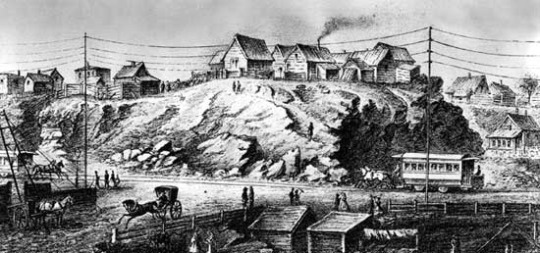
Presidents:
Zachary Taylor (1849-1850)
Millard Fillmore (1850-1853)
Franklin Pierce (1853-1857)
James Buchanan (1857-1861)
Important Events:
- Peak point of tension between North and the South, primarily over which states will be admitted as free states or slave states.
- The Compromise of 1850 admits California as the 31st state, without slavery, and adds Utah and New Mexico as territories with no decision on the topic. The Fugitive Slave Law is strengthened under the Compromise, which also ended the slave trade in the District of Columbia.
-1854 - The Republican Party is founded, in opposition to the Kansas-Nebraska Act. (Note: This form of ��Republican” is essentially modern-day Democrats. The parties switched platforms later.)
-The Kansas-Nebraska Act of 1854 allows the issue of slavery to be decided by a vote of settlers. This established the territories of Kansas and Nebraska and would breed much of the rancor that culminated in the actions of the next years of "Bleeding Kansas."
2. The 1860s

Presidents:
James Buchanan (1857-1861)
Abraham Lincoln (1861-1865)
Andrew Johnson (1865-1869)
Ulysses S. Grant (1869-1877)
Important Events:
-1860- The Pony Express begins. Overland mail between Sacramento, California and St. Joseph's, Missouri is carried over the Oregon Trail for eighteen months by this series of riders on horseback, then rendered obsolete when the transcontinental telegraph is completed.
- 1860 - South Carolina is the first southern state to secede from the Union in response to the election of Abraham Lincoln as President.
-The Homestead Act of 1862 is approved, granting family farms of 160 acres to settlers, many of which were carved from Indian territories. This promotes expansion West, and eventually led to the establishment of the state university systems.
- The Civil War 1861 – 1865
Overview: Union won due to their advanced railroad system and industrialization that provided them with clothing and other supplies. South is ransacked by General Sherman, brings about era of Reconstruction. Slavery is abolished, but former slaves are not immediately emancipated.
People to know:
Abe Lincoln (President of the Union)
Ulysses S. Grant (Union General, future President)
William Sherman (Union General)
Jefferson Davis (President of the Confederacy)
Robert E. Lee (Confederate General)
Stonewall Jackson (Confederate General)
Important Events/Battles:
Fort Sumter 1861- A fort in Charleston, South Carolina harbor is bombarded by Confederate forces after the U.S. Army commander failed to evacuate, thus triggering a declaration of war.
Battle of Bull Run 1861- First official battle in Manassas, Virginia. Confederates emerge victorious as picnicking (yes, you read that right. People were picnicking and using the battle as entertainment) onlookers watch on in horror; realization that this war won’t be resolved quickly or easily.
Emancipation Proclamation is issued by Abraham Lincoln on September 22, 1862 stated that all slaves in places of rebellion against the Federal Government would be free.
Battle of Shiloh 1862- Victory of Union over Confederacy. Led by Ulysses S. Grant.
Battle of Antietam 1862- Bloodiest day of the war in Sharpsburg, Maryland.
Gettysburg 1863- Considered the turning point of the war. The furthest Southern incursion into the North, where the Union beats back the attacking Confederate troops. A few weeks after the war, Lincoln issues the Gettysburg Address (“Four score and seven years ago…”).
The South Surrenders on April 2nd, 1865
- April 9th, 1865 - Abe Lincoln is assassinated at Ford Theatre by John Wilkes Booth. Andrew Johnson takes his place, and he does not keep up Reconstruction and withdrew all troops from the South so they could be left to their own devices. This is said to be the reason for segregation.
- 1866 -The KKK is formed to prevent Black people from voting. Things such as poll taxes, grandfather clauses, and literacy tests are implemented by states to also discourage Black people from voting as well.
- 1867 -Alaska is purchased from Russia for $7.2 million dollars, approximately two cents per acre, by signing the Treaty of Cession of Russian America to the United States.
- 1869- The final golden spike of the transcontinental railroad is driven into the ground, marking the junction of the Central Pacific and Union Pacific Railroads. This act, as much as any other, would signal the marked increase in the settlement of the west.
3. The 1870s
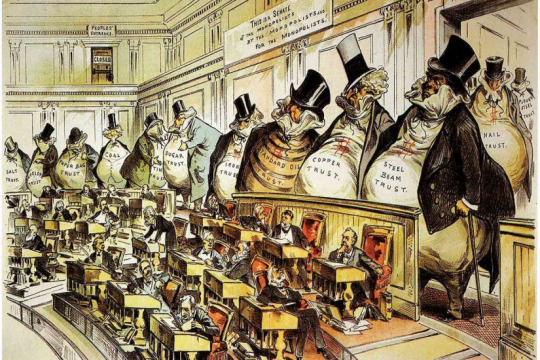
Presidents:
Ulysses S. Grant (1869-1877)
Rutherford B. Hayes (1877-1881)
Important Events:
-The Gilded Age begins. Characterized by gross materialism and blatant political corruption that gave rise to important novels of social and political criticism.
-1870 - Standard Oil Company is incorporated by John D. Rockefeller.
-1870 - The first African-American to be sworn into office in the United States Congress, Hiram Rhodes Revels, a Republican from Mississippi takes his place in the United States Senate.
- 1870 - The 15th Amendment is ratified. It gave the right to vote to Black Americans. Race would officially no longer be a ban to voting rights, though it continues to be an issue in Southern states.
- 1871 - The great fire of Chicago starts. The fire burned 1.2 million acres of land, destroyed 17,450 buildings, killed 250 people, and left 90,000 homeless.
- 1876 - The Battle of Little Big Horn occurs when Lt. Colonel George Custer and his 7th U.S. Cavalry engage the Oceti Sakowin and Cheyenne Indians on the bluffs above the Little Big Horn River. All 264 members of the 7th Cavalry and Custer perish in the battle, the most complete rout in American military history.
- 1877 - Crazy Horse surrenders to the United States Army in Nebraska. His people had been weakened by cold and hunger.
- 1878 - The first commercial telephone exchange is opened.
- 1878 - Thomas Edison patents the cylinder phonograph and the Edison Electric Company begins operation
4. The 1880s

Presidents:
James A. Garfield (1881-1881)
Chester A. Arthur (1881-1885)
Grover Cleveland (1885-1889)
Benjamin Harrison (1889-1893)
Important Events:
- 1881 - Thomas Edison and Alexander Graham Bell form the Oriental Telephone Company.
-1882 - The Standard Oil Company trust of John D. Rockefeller is formed when Rockefeller places all of his oil holdings inside it.
- 1883 - The Pendleton Civil Service Reform Act is passed by Congress, overhauling federal civil service and establishing the U.S. Civil Service agency.
- 1884 - The Federation of Organized Trades and Labor Unions in the U.S.A. call for an eight-hour workday.
- 1885 - The Statue of Liberty arrives for the first time in New York harbor.
- 1886 - The Haymarket riot and bombing occurs in Chicago three days after the start of a general strike in the United States that pushed for an eight-hour workday.
- 1887 - Congress passes the Interstate Commerce Act to regulate and control the monopolies of the railroad industry.
- 1888 - The prototype for the commercial phonograph is completed by Thomas A. Edison
- 1888 - The Washington Monument officially opens to the general public.
5. The 1890s
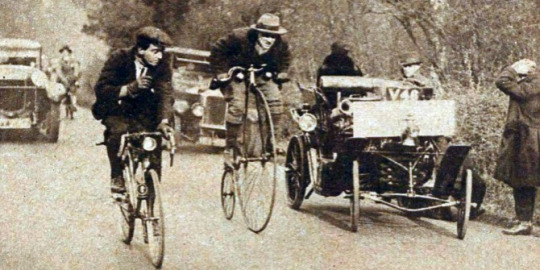
Presidents:
Benjamin Harrison (1889-1893)
Grover Cleveland (1893-1897)
William McKinley (1897-1901)
Important Events:
- The rise of Imperialism.
- 1890 - The Battle of Wounded Knee, South Dakota, occurs in the last major battle between United States troops and Native Americans. Hundreds of native men, women, and children are slain.
- 1892 - Ellis Island, in New York Harbor, opens as the main east coast immigration center, and would remain the initial debarkation point for European immigrants into the United States until its closure in 1954. More than 12 million immigrants would be processed on the island during those years.
- 1892- Nativist sentiments rise with the immigration of Southern and Eastern Europeans flooding into the country. Italian, Polish, Russian, and other immigrants face significant discrimination.
- 1895 - The first professional football game is played in Latrobe, Pennsylvania.
- 1896 - Plessy vs Ferguson decision by the Supreme Court states that racial segregation is approved under the "separate but equal" doctrine. This paves the way for Jim Crow laws in the South.
- 1896 - The first modern Olympic Games is held in Athens, Greece.
- 1896 - Gold is discovered near Dawson, Canada, setting up the Klondike Gold Rush
- 1897 - The era of the subway begins when the first underground public transportation in North America opens in Boston, Massachusetts.
-1897- The Progressive Era begins
- 1898 – The Spanish- American War begins. It lasts one year and ends in U.S. victory. It was triggered by United States battleship Maine exploding and sinking under unknown causes in Havana Harbor, Cuba, killing two hundred and sixteen seamen.
- 1898 - The United States annexes the independent republic of Hawaii.
- 1899 - The Open Door Policy with China is declared by Secretary of State John Hay
9. The 1900s

Presidents:
William McKinley (1897-1901)
Theodore Roosevelt (1901-1909)
William Howard Taft (1909-1913)
Important Events:
- 1901 - The American League of Major League Baseball is formed.
- 1902 - The first movie theatre in the United States opens in Los Angeles, California.
- 1902 - Cuba gains independence from the United States.
- 1903 - Inventors Wilbur and Orville Wright succeed in the first sustained and manned plane flight.
- 1906 - The Pure Food and Drug Act and the Meat Inspection Act is passed due to the efforts of “muckrakers” that worked to expose corruption. “The Jungle” by Upton Sinclair, which described the horrible conditions in the meatpacking industry, helped sponsor outrage that would get these laws passed.
- 1908 - The first passenger flight on a plane occurs when Wilbur Wright escorts Charles W. Furnas in the Wright Flyer III at Huffman Prairie Flying Field in Dayton, Ohio.
- 1908- The first production Model T is built at the Ford plant in Detroit, Michigan.
10. The 1910s
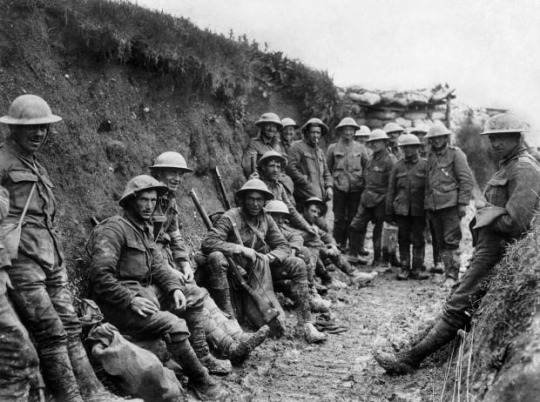
Presidents:
William Howard Taft (1909-1913)
Woodrow Wilson (1913-1921)
Important Events:
- 1911 - Standard Oil is declared a monopoly by the United States Supreme Court and ordered dissolved under the powers of the Sherman Antitrust Act.
- 1913 - The first moving assembly line is introduced and adopted for mass production by the Ford Motor Company, allowing automobile construction time to decrease by almost 10 hours per vehicle.
- 1915 – The first telephone conversation is conducted by Alexander Graham Bell and Thomas A. Watson between New York and San Francisco.
- 1915 - The British ship Lusitania is sunk by a German U-boat submarine, causing 128 American passengers to be lost. Germany, although it warned of the pending crises to passengers, issued an apology to the United States and promised payments.
- 1918 - The influenza epidemic Spanish flu spans the globe, killing over twenty million worldwide and five hundred and forty-eight thousand people in the United States.
- World War I 1917-1918
Overview: After three years spent remaining neutral, the United States joins World War I. The U.S. made its major contributions in terms of supplies, raw material, and money, and its joining into the war helped to turn the tides against the Germans and Ottomans.
People to know:
Woodrow Wilson (President)
John J. Pershing (General)
Important Events/Battles
The United States declares war on Germany in 1917 after the Zimmermann Telegram is given to the United States by Britain on February 24, showing the offer by Germany to give Mexico back the southwest United States if they would declare war on the United States.
June 26th, 1917 - The first troops from the United States arrive in Europe to assist European allies in World War I. Troops engaged in World War I would include conscript soldiers authorized by the passage of the Conscription Act, the Selective Services Act, on May 18, 1917. General John Pershing would be placed in command of the American Expeditionary Forces during the campaign.
1918 - The United States military forces has over one million troops in Europe fighting in World War I.
May 28, 1918- United States forces are victorious in the Battle of Cantigny, the first independent American operation.
September 26, 1918- Allied forces begin the attack at Meusse-Argonne, the final offensive of the war.
November 11, 1918 - Hostilities in World War I begin to end with the Austria-Hungary alliance for armistice with the allies on November 3. Armistice Day with Germany occurs when the Allies and the German nation sign an agreement in Compiegne, France. Woodrow Wilson would become the first U.S. President to travel to Europe while in office when he sails to attend the Paris Peace Conference on December 4.
1919 - The Treaty of Versailles is signed, ending World War I.
- 1919- The 18th Amendment is passed, bringing about the era of Prohibition
11. The 1920s

Presidents:
Woodrow Wilson (1913-1921)
Warren G. Harding (1921-1923)
Calvin Coolidge (1923-1929)
Herbert Hoover (1929-1933)
Important events:
-1920 - The League of Nations is established with the ratification of the Treaty of Versailles, ending the hostilities of the first World War. In a final vote, the United States Senate again votes against joining the League.
- 1920 - Women are given the right to vote when the 19th Amendment to the United States constitution grants universal women's suffrage.
- 1920 - The National Football League is formed
- 1921 - A national quota system on the number of incoming immigrants is established by the United States Congress in the Emergency Quota Act, curbing legal immigration.
- 1923 - The first sound on film motion picture Phonofilm is shown in the Rivoli Theatre in New York City by Lee de Forest.
- 1924 - The Indian Citizenship Act granted all Native Americans citizenship that had been born within the territory of the United States.
- 1925 - Nellie Tayloe Ross is inaugurated as the first woman governor of the United States in Wyoming.
- 1925 - Radiovision is born. The precursor to television is demonstrated by Charles Francis Jenkins when he transmits a 10 minute film of synchronized pictures and sound for five miles from Anacostia to Washington, D.C. to representatives of the United States government.
- 1928 - The first appearance of Mickey and Minnie Mouse on film occurs with the release of the animated short film, Plane Crazy.
- 1928 - Amelia Earhart becomes the first woman to fly over the Atlantic Ocean.
- 1929 - Postwar prosperity ends in the 1929 Stock Market crash. The plummeting stock prices led to losses between 1929 and 1931 of an estimated $50 billion and started the worst American depression in the nation's history.
Hope this helped, and happy writing!!!!!
#writing#writing tips#writing advice#writeblr#booklr#writing help#writer#writers#history#historical fiction#fiction#creative writing#tips for writers
96 notes
·
View notes
Video
[Music: Hope by Keith Kenniff from iMovie audio library] We came across a little offshoot trail on the Appalachian Trail on top of South Mountain. Within moments we found this statue dedicated to a dying civil war confederate soldier from North Carolina. Our area is steeped in some of the bloodiest history from this war: the battles South Mountain, Boonsboro, Antietam, Gettysburg, etc. A most realistic statue. Judging from the number of flags, our area also has a lot of people stuck in that era. I took the pictures of crumbled rocks and a far-away horizon summit view at the site of the first Washington Monument on another part of the ridge of South Mountain. I mentioned it a few posts ago. The story goes that after General Lee crossed the Potomac River invading the North, his soldiers eventually marched into the town of Boonsboro a few miles from the mountain. Looking up at the mountain, he saw people gathered on top of South Mountain and sent soldiers to investigate. Apparently a number of Boonsboro town’s people had gone up there to watch the battle ensue. From up there—a ring side seat to the terror of war. #civilwar #southmountain #boonsboro #soldierstatue #confederatesoldier #bloodywar #changeandgrow https://www.instagram.com/p/COz4o8YhY4j/?igshid=g2uty4i7n0zm
2 notes
·
View notes
Text
Confedetate Veteran Sergeant Berry Greenwood Benson.
Washington D.C. Confedetate Veterans Reunion And Parade 1917.
He wears the uniform he wore the day he walked home in 1865 carrying his rifle he carried that day as well.
~~~~~~~~~~~~~~~~~~~~~~~~~~~~~~~~
Berry Benson was born on Feburary 9th 1843 in Hamburg, South Carolina, just across the Savannah river from Augusta, Georgia. In 1860 Berry Benson enlisted with his brother in a local militia unit aged 17 and 15 respectively. The next spring they witnessed the bombardment of Fort Sumter in Charleston, South Carolina.
After the surrender of Fort Sumter the 1st South Carolina Regiment was sent to Virginia where the Benson brothers served under A.P. Hill and Thomas Jackson. The unit fought in battles such as Second Manassas, Fredericksburg, Antietam, and served in Jackson's valley campaign as Jackson's foot cavalry. Berry Benson was wounded at Chancellorsville and thus missed the battle of Gettysburg.
But he had recuperated by winter 1863 and returned to his unit where he was appointed as a scout.
The spring of 1864 brought another Union offensive into The Wilderness.
After a confusing, bloody battle in dense woods, the Union commander, General Ulysses S. Grant, attempted to get around the Confederate army and march on Richmond, Virginia, but was checked at Spotsylvania, Virginia. There followed one of the most terrible battles of the Civil War, in which the severest action occurred at the "Bloody Angle," where Benson fought.
By then the young soldier had won a reputation for scouting enemy positions.
At Spotsylvania he reconnoitered the Union camp and on an impulse stole a Yankee colonel's horse, leading it back to Confederate lines. Sent out a second time on Lee's orders, he was captured and imprisoned at the military prison in Point Lookout, Maryland.
On the second day of his captivity, Benson slipped unseen into the waters of Chesapeake Bay and swam two miles to escape but unfortunately for him he was recaptured in Union-occupied Virginia, and then was sent first to the Old Capitol Prison in Washington, D.C., then to the new prison camp at Elmira, New York.
What happened next is the Civil War's version of "The Great Escape."
Once there he joined a group attempting to tunnel out but the effort was discovered and broken up.
Soon thereafter on October 7, 1864 at four o'clock in the morning he and nine
companions entered a tunnel sixty-six feet long which they had been digging for about two
months.
The earth extracted had been carried away in their haversacks and disposed of.
On reaching the outside of the stockade the prisoners scattered in parties of two and three, Sergeant Benson going alone, since the companion he had intended to take with him failed to escape.
He headed south and miraculously reached Confedetate lines.
Sergeant Benson, half a century later, still preserved the passes given him from Newmarket, Virginia, where he first reached Early's army, to Richmond.
He wrote in 1911 that the men who made their escape were:
Washington B. Trawiek,
of the Jeff. Davis Artillery, Alabama, then living at Cold Springs, Texas; John Fox Maull, of
the Jeff. Davis Artillery, deceased; J. P. Putegnat, deceased; G. G. Jackson of Wetumpka, Alabama;
William Templin, of Paunsdale, Alabama; J.P.Scruggs, of Limestone Springs, South Carolina;
Cecrops Malone, of Company F. Ninth Alabama Infantry, then living at Waldron, Ark.; Crawford
of the Sixth Virginia Cavalry, and Glenn.
Most of them were present at Appomattox.
Upon learning of the surrender of General Johnson in North Carolina Benson and his brother walked home.
In 1868 Sargent Benson married his wife Jeannie Oliver with whom he had six children with and, while working as an accountant, developed a complex book-keeping method that he called the “Zero System” and sold it to companies all over the country.
He and his wife wrote poetry for publication, and his wife and daughters were all fine pianists.
One of his daughters studied violin in New York and became a concert performer.
Berry Benson became an advocate for striking mill workers and worked on developing high-protein food crops for poor black sharecroppers.
Benson also became a nationally known puzzle solver, breaking a secret French code known as the"Undecipherable Cipher," in 1896 (On a challenge) and informed the U.S. War Department that he had done so.
During the Spanish-American War Benson offered his services to the United States Government but unfortunately the war ended before he could be of use.
He was perhaps best known, however, for his private investigation into the case of Leo Frank, an Atlanta factory manager accused of raping and murdering 13-year-old Mary Phagan in 1913. Perceiving discrepancies in prosecution testimony, Benson concluded Frank was innocent. His logical arguments persuaded the Georgia governor that there was enough uncertainty in the case to commute Frank’s sentence from death to life imprisonment, but that did not prevent the accused’s subsequent lynching.
He also headed a campaign to support French war orphans in World War I and convinced his friends and neighbors to adopt some of them.
He later advised the U.S. attorney general of the possibility of fraud involving European and American fiscal exchange rates and, when he became aware of the activities of Carlo Ponzi, specifically warned the Massachusetts attorney general of the original “Ponzi Scheme.”
In the midst of this productive life, Benson became an officer in the Confederate Survivors Association and was chosen to model for the statue of the infantryman atop the Augusta monument, which was dedicated in 1878.
Even in advanced age Berry Benson remained fit and active leading boy scouts on fifteen mile hikes and attending veteran reunions and parades until his death on January 1st 1923 he was 79.
"In time, even death itself might be abolished; who knows but it may be given to us after this life to meet again in the old quarters, to play chess and draughts, to get up soon to answer the morning role call, to fall in at the tap of the drum for drill and dress parade, and again to hastily don our war gear while the monotonous patter of the long roll summons to battle.
Who knows but again the old flags, ragged and torn, snapping in the wind, may face each other and flutter, pursuing and pursued, while the cries of victory fill a summer day? And after the battle, then the slain and wounded will arise, and all will meet together under the two flags, all sound and well, and there will be talking and laughter and cheers, and all will say, Did it not seem real? Was it not as in the old days?”
~ 1st Seargent Berry Greenwood Benson 1st South Carolina Infantry Regiment Company H.
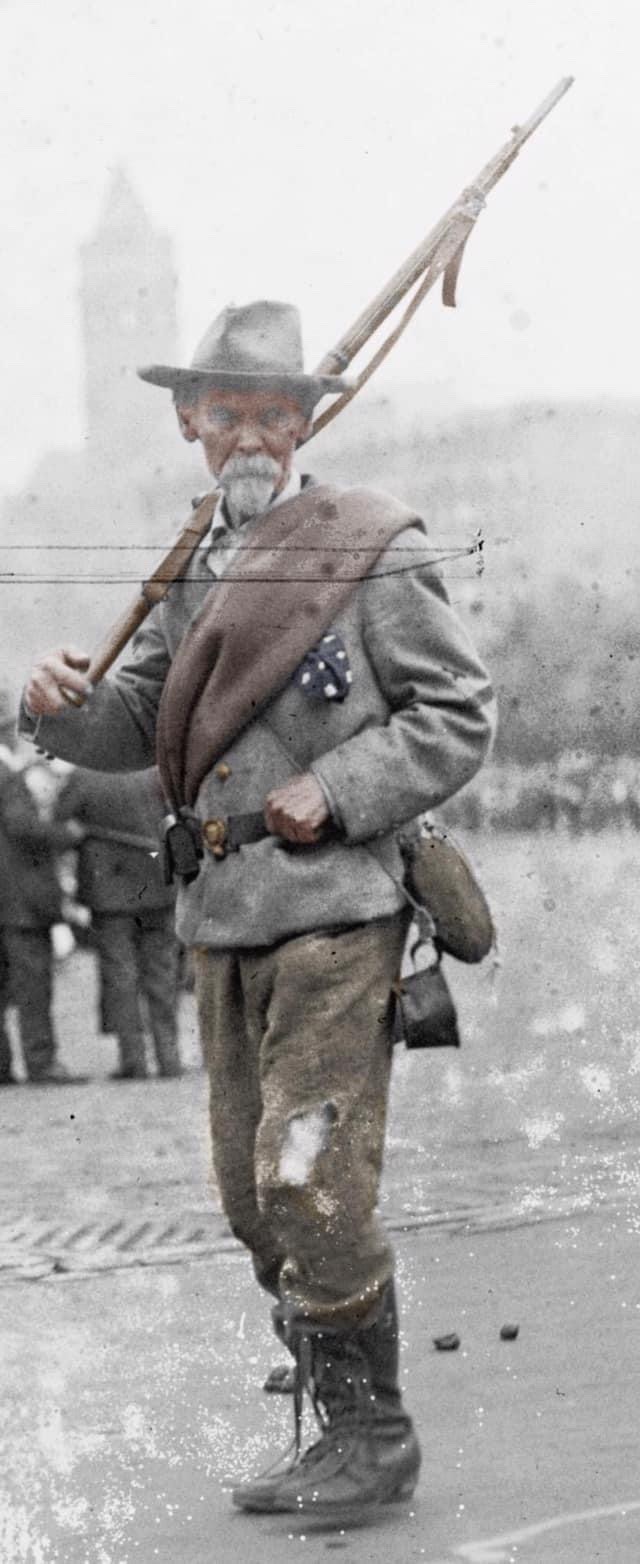
2 notes
·
View notes
Text
#OTD in 1862 – The Irish Brigade suffered over 60% casualties at the Battle of Antietam at an area that came to be known as Bloody Lane.
#OTD in 1862 – The Irish Brigade suffered over 60% casualties at the Battle of Antietam at an area that came to be known as Bloody Lane.
At the Battle of Antietam, the Irish Brigade led its division in attacking the infamous Bloody Lane. In preparation for the deadly work ahead, Father William Corby, one of the brigade’s chaplains and future president of Notre Dame, rode down the firing line and administered a general rite of absolution to the men. Thomas Meagher advanced to the crest of a hill overlooking a brigade of North…

View On WordPress
#69th New York Militia#American Civil War#Bloody Lane#Captain McGee#Confederates#Father William Corby#Fighting 69th#Gen. Israel Richardson#The Battle of Antietam#The Battle of Antietam Monument#The Irish Brigade#Thomas Meagher#Unions
11 notes
·
View notes
Text
american conservatism and the minds of people: a black man’s perspective.
Hi, it is I.
I often think long and hard about the mind states of the people around me, and my inevitable conclusion is that the vast majority of people are monumentally and irrevocably fucking stupid. As it turns out, people have a really hard time letting go of things with which they have grown familiar or fond, and therein lies the basic principle of conservative thought.
“But aren’t some things okay to keep?”
Well, obviously, not everything needs to be thrown out in order for improvement to occur. In the Army, we have things labelled “sustains” and “improves”. The two terms are pretty self-explanatory (as are most things in the military): sustains are the things that work, and the improves are the things you either completely nix or need to, erm, improve. Of course, this begs a question: as it relates to a society of living, (mostly) breathing human beings, how does this apply?
"Don’t throw out the baby with the bath water,” it is commonly said. I am not entirely sure who was throwing away bathing children, but that’s a discussion for a different time. The baby in this idiomatic expression is whatever it is we are supposed to be maintaining. Let’s start with an example: police.
Obviously, it is entirely infeasible to literally abolish police. We absolutely need the police force as an institution, and good and effective policing is a pillar to a modern, functional society. However, we can abolish unprofessional, unnecessarily violent, racist, or otherwise unbecoming behaviour from police departments, and also demonstrate that such things are intolerable and met with appropriate punishments every time these rules are broken. NWA didn’t make “Fuck The Police” because they wanted to express interest in having thoroughly arresting cop sex; it exists because they don’t trust the police.
youtube
Above: An Autistic Swedish dude spitting shockingly accurate commentary-by-proxy about American society. Flames!
Due possibly in part to dubiously worded slogans such as “defund the police”, modern conservatives balk at the thought of changing anything of significance about how policing in many communities in the United States is conducted, even going as far as to label the reform for which we call as an attack on the very idea of police.
That said, historically, the very pillars of police forces in the United States have their foundations in slavery and post-slavery racist institutions, which means that, while much has changed on the surface, the way police implement policy reflects structural and societal racism. As a result, simply attacking individual instances of misconduct will almost always fail to elicit any meaningful progress, which is why some do seek to dismantle police departments (an option I cannot fathom as being realistic, especially not in the short term).
The lack of a centralised police organisation from which to implement policy certainly does not help, and while some police departments, to include the Department of Justice itself, have introduced implicit bias training, it would appear that change was difficult to measure. Additionally, many police departments have not addressed the more overt problem of explicit racism in law enforcement, which is a nigh-impossible thing to tackle expeditiously without a top-down structure to deal with it. It has improved steadily overall, however, but not without significant disapproval...
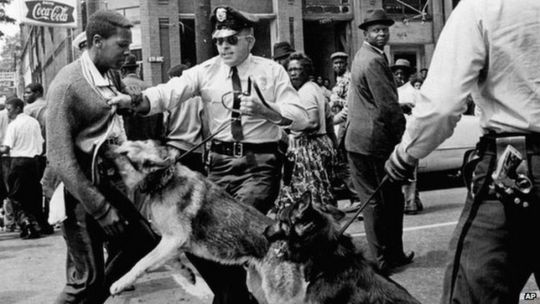
Pictured: “disapproval”. A civil rights demonstrator is attacked by a police dog in Birmingham, Ala., in 1963. (Photo credit: AP)
The Origins
As I noted earlier, there is plenty of shit people want to keep, and most for relatively understandable reasons -- after all, those things provide a sense of familiarity. “It’s always been this way -- why change it?” they ask. One needs only to look at our, um, flowery history to see countless examples of things that required change...
The transatlantic slave trade transported up to 12 million forcibly enslaved Africans to the Americas, many of whom arrived in what is now the United States. As unspeakably horrifying as the actual journey was, this was only the beginning of the tribulations that would befall the slaves and their descendants in the future.
While Europeans played a large part in introducing the idea of race-based caste systems into colonised lands, the American brand of discrimination is different in the fact that the idea that Blacks and Native Americans were genetically inferior to whites was endemic to our inception, and thus, formed the basis of the things enshrined into American democracy.
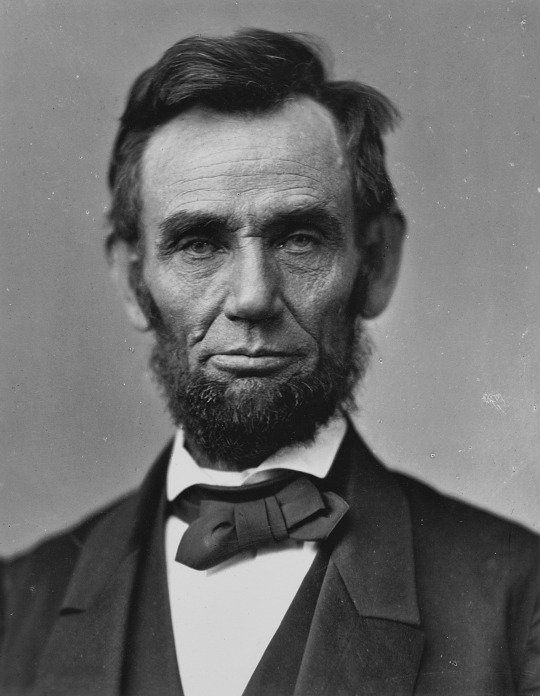
Photo credit: Alexander Gardner / Wikimedia Commons
Abraham Lincoln entered the chat.
Naturally, having someone even so much as threaten the idea of racial dominance after literal fucking centuries of treating Black people as property did not sit well with the slave-owning populace (even if Lincoln’s motives were not exactly altruistic). While the Southern states did in fact operate an agrarian economy heavily dependent on chattel slavery, it was that notion of superiority combined with societal comfort they felt that ultimately catalysed the secession of the Southern states from the Union...

Pictured: Civil War reenactors (from the Confederate side) simulate the Battle of Antietam, the bloodiest battle in US history. Also, why the fuck is Civil War reenactment a popular thing to do? It’s deeply weird. (Photo credit: MPRNews.org)
...and then they decided to have the deadliest fucking war in American history over that comfort. Spoiler alert: the Confederates lost both the war and their precious bullshit institution of slavery -- but even after the Emancipation Proclamation was issued, many Southern slave owners did not even pass the news of freedom to their slaves for months.
In keeping with the preservationist and racist mindset which occupied most Southerners’ brains, any attempt to integrate Black people into society during the Reconstruction period was stymied at every turn. To them, despite Black people being de jure full citizens in accordance with the Civil Rights Act of 1866, we were still subhuman. Due to Jim Crow laws, Ku Klux Klan terrorism, and other assorted nonsense, we made virtually no progress toward equality until the Civil Rights Movement and resulting laws such as the Civil Rights Act of 1964, the Voting Rights Act of 1965, and the Fair Housing Act of 1968.
“Well, you got what you wanted! YOU’RE EQUAL! Quit yer bitchin’!”
Ah, if only things worked that way in real life. As previously noted, even if things are codified into law as changes, there are still people who try really hard to keep everything exactly the fucking same, so it does not end up happening in practice. Things such as residual effects of redlining and continuing disproportionate and excessive imprisonment of minorities, amongst other issues, still affect people in the present day. In other areas, people exploit loopholes in order to lawfully discriminate against others they might deem “undeserving”.
Lots of things, especially when it comes to role of minorities in society, have historical precedents. When arguing said precedents with conservative types, the conversation almost always leads to one of several (predictable) conclusions: the person believes that 1) negative historical events (e.g., slavery, Native American genocide, etc.) were not that bad; 2) those things did not happen at all; or 3) those things were bad, but somehow do not affect modern society.
Obviously, all three are emphatically wrong. This is why typical conservative behaviour, even in this modern era in which information sharing is instantaneous, does not surprise me: often, the rhetoric is not rooted in reality, and often resorts to appeals to emotions to elicit a knee-jerk response. This is not to say that this does not occur on liberal ends of the spectrum, but modern conservative rhetoric is rooted primarily in unjustified fear of change and anti-intellectualism.
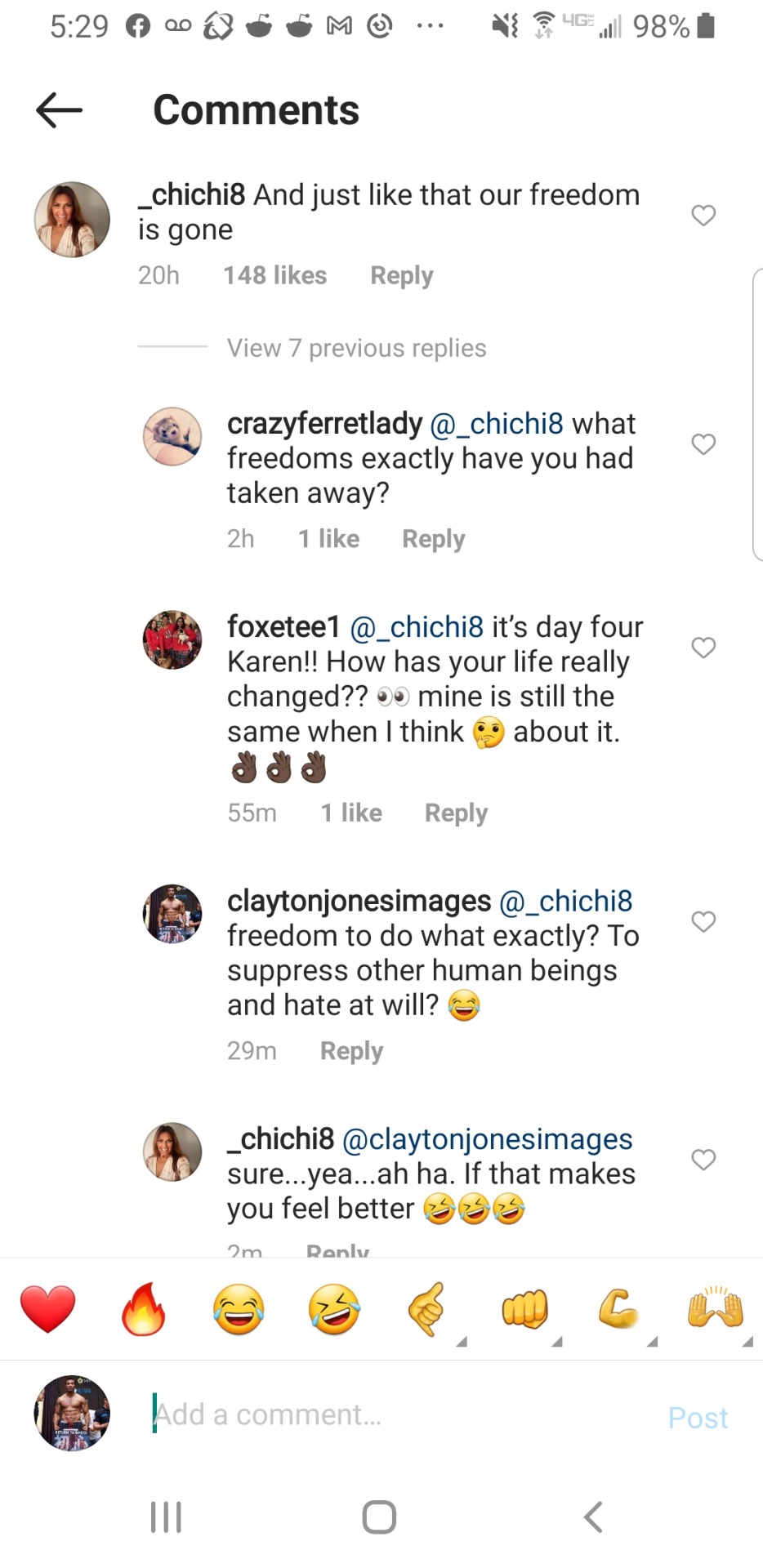
Pictured: A screenshot I took of someone on a pro-President Biden post desperately trying to be oppressed.
This kind of shit is utterly exhausting. Neoconservatism, in a nutshell, is people literally inventing problems and subsequently getting angry at their own creations. It is the equivalent of setting up a bear trap, immediately stepping in it, and wondering why the fuck you’re stuck in said bear trap and your foot doesn’t work anymore. During the Obama administration, the only thing I would witness is people insisting (without any evidence, of course) that President Obama was the Antichrist and that he would usher in the New World Order and take everyone’s guns. All zero of those things happened, of course, but when Donald Trump assumed the presidency, the rhetoric completely reversed, and he was named “God’s chosen" by evangelical figures, despite him having broken perhaps all of the Old Testament’s Ten Commandments. Of course, as you can see with the above screenshot, clearly, they have returned to the Obama bitching method, but diminished, partially because President Biden is also an old, white male, and they don’t need to ask where he was born.
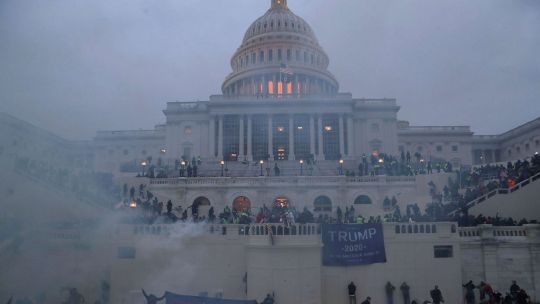
Pictured: what happens when you fuel millions of self-victimising people with QAnon conspiracy theories and possibly loads of Bang energy drinks. Photo credit: ABC News
The hypocrisy is absolutely palpable amongst these types of people, and if I tried to sit here and continued to provide examples of conservative figures contradicting themselves, I would die either of old age or myocardial infarction, whichever happened first. The difference in the reaction to Black Lives Matter protests versus the storming of the U.S. Capitol on January 6, 2021 makes the double standard quite transparent: justice and equality, while technically codified into law, are clearly are not administered equally in modern-day America. We’re still not like the others.
Our brand of conservatism, by and large, is the enemy of those two very important American ideals.
|the kid|
#conservatism#conservative#liberal#Donald Trump#Joe Biden#President of the United States#creative writing#article#political ideology#critical thinking
2 notes
·
View notes
Photo



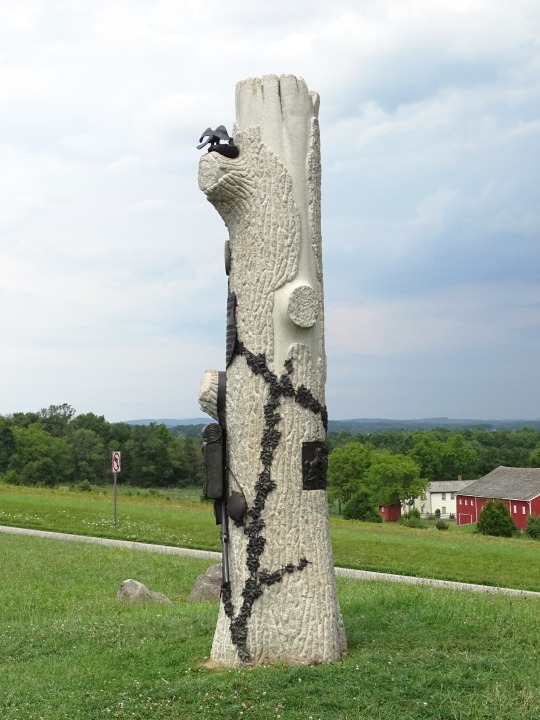
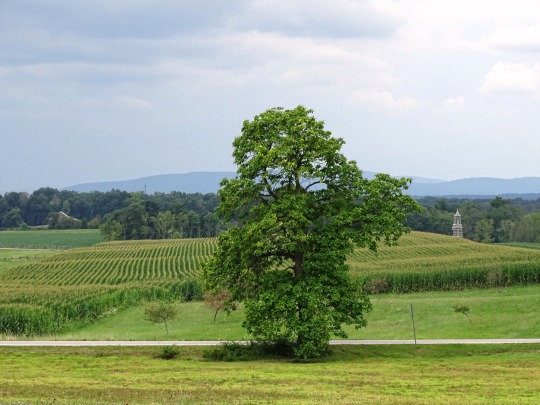
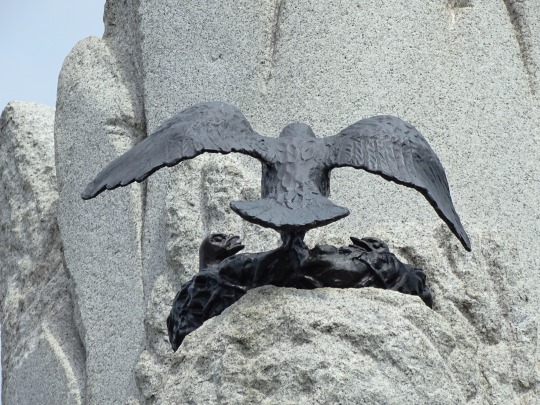

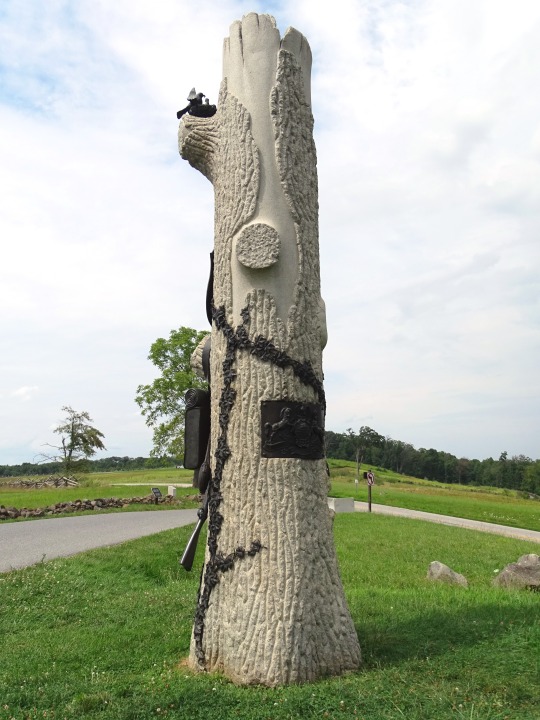

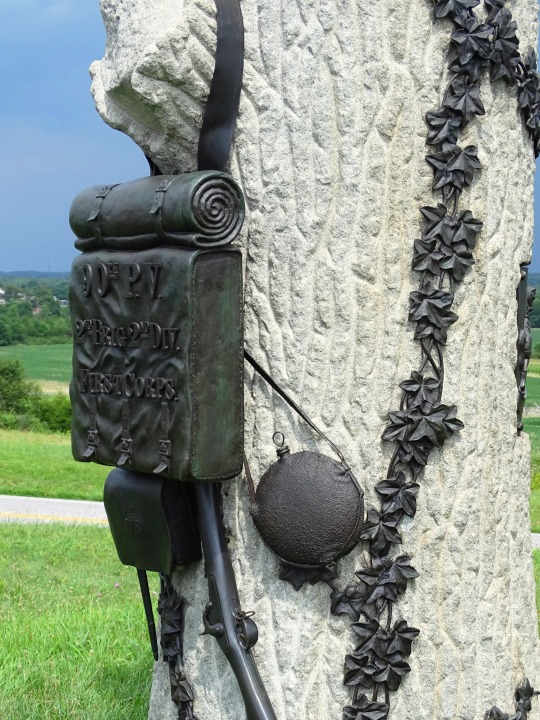
Gettysburg National Military Park (No. 48)
There are three monuments to the 90th Pennsylvania Volunteer Infantry Regiment on the battlefield of Gettysburg. The “Granite Tree Monument” is northwest of Gettysburg on Oak Ridge. The “Eagle monument” and “Boulder monument” are south of town along Hancock Avenue. In addition to the regimental monuments, a monument to the 90th Pennsylvania’s Chaplain Horatio Howell is on Chambersburg Street in Gettysburg. There is also a monument to the 90th Pennsylvania Infantry on the Antietam battlefield.
Colonel Peter Lyle commanded the 90th Pennsylvania Infantry at the beginning of the Battle of Gettysburg. He took over command of the brigade during the battle. Major Alfred J. Sellers then took command of the regiment.
The Commonwealth of Pennsylvania erected the “Granite Tree Monument” in 1888 northwest of Gettysburg on Oak Ridge along Doubleday Avenue.
The 90th Pennsylvania’s Granite Tree monument on Doubleday Avenue is filled with interesting details. The beautifully realistic bark of the tree trunk is stripped in areas and splintered on the side from a grazing shot. The trunk itself is shattered at the top, with the cannonball that caused it still embedded in the tree’s heart.
But after the ravages of war life goes on. Inches away a mother bird feeds two babies in her nest. Bronze vines grow around the trunk. And the tree still provides other useful services, holding a soldier’s rifle, bayonet, knapsack and cartridge case. The knapsack is lettered for the 90th Pennsylvania. Above the bronze shield telling the regiment’s story is a circle formed from the granite of the trunk, the symbol of the Union First Army Corps.
Source
#Gettysburg National Military Park#Doubleday Avenue#observation tower#USA#Pennsylvania#summer 2019#original photography#landscape#countryside#flora#nature#hills#forest#90th Pennsylvania Infantry Monument#travel#Granite Tree Monument#American Civil War#US Civil War#US history#John M. Gessler#architecture#dark clouds#detail#tourist attraction#landmark
2 notes
·
View notes
Photo




Statue of Jesse Lee Reno, in downtown Reno
Plaque reads:
In 1868: Lake's Crosssing, a growing community along the Truckee River in Northern Nevada, was parceled into a proper town site by the Central Pacific Railroad, the railroad named the town Reno, to honor Major General Jesse Lee Reno. Born April 20, 1823 in Wheeling, Virginia, Reno graduated 8th in his class of 59 at West Point. He served in the battles of Vera Cruz, El Telegrafo, Cerro Gordo, Contreras, Churubusco, Mexico City and Chapultepec in the Mexican War, during which he was twice promoted for his braverey and leadership. In 1853 he married Mary Bradley Beanes Cross. The couple had four sons and one daughter. During the U.S. Civil War, General Reno and his troops defended our nation's capital, possibly saving it from invasion by Confederate forces. On September 14, 1862 Reno commanded the LX Corps at the Battle of South Mountain. Astride his horse, leading his troops in battle, Reno was fatally shot by Confederate sharpshooters. At the Battle of Antietam three days later, his troops' battle cry was "Remember Reno!" "For his high character and the kind qualities of his heart in private life, as well as for his military genius and personal daring which marked him as a soldier, his loss will be deplored by all who knew him" - General Ambrose Burnside. This bronze monument: dedicated in 2006, is supported by a granite boulder that was extracted from the rail trench, the city of Reno's largest civic project. The rail trench was dedicated in 2005.
1 note
·
View note
Photo






Moving To Mechanicsville Virginia
Mechanicsville has been associated with a few major battles during the American Civil War. The first was the Battle of Beaver Dam Creek. It started on June 26, 1862, towards the east of Mechanicsville. This was the second in a series of battles known as the Seven Days Battles, which were fought during the American Civil War. The third battle, of the Seven Days Battles, was the Battle of Gaines' Mill which also took place east of Mechanicsville. The Battle of Cold Harbor was the other major battle fought near Mechanicsville.
Since a number of important battles of the American Civil War were fought near Mechanicsville, the area has several historic sites and museums which take visitors into that era. In addition, Richmond, which is a few miles away, has a number of interesting attractions including parks, gardens, museums, historic sites, and monuments.
On July 17, 1862, Congress enacted legislation that authorized the president to purchase "cemetery grounds" to be used as national cemeteries "for soldiers who shall have died in the service of the country." That first year, 14 cemeteries were established, including one in the sleepy Maryland town of Sharpsburg, where 4,476 Union soldiers were laid to rest following the bloody Battle of Antietam.
The area identified as part of the battlefield for "Second Cold Harbor" stretches from near the intersection of Walnut Grove Road and Mechanicsville Turnpike to "Turkey Hill" near the Rt. 156 crossing of the Chickahominy River An area of the battlefield which saw heavy casualties and a nearby post-war National cemetery are preserved as historic monuments
The second consolidation of federal Veterans programs took place July 21, 1930, when President Herbert Hoover signed Executive Order 5398 and elevated the Veterans Bureau to a federal administration—creating the Veterans Administration—to "consolidate and coordinate Government activities affecting war veterans." At that time, the National Homes and Pension Bureau also joined the VA.
The primary coordinate point for Mechanicsville is located at latitude 37.6213 and longitude -77.3521 in Hanover County The formal boundaries for the Mechanicsville Census Designated Place (see map below) encompass a land area of 28.32 sq. miles and a water area of 0.11 sq. miles.
Mechanicsville Is a small town with that olden days charm feel to it. Many in resent days are looking to recapture those times and places by moving to this small rural area. Be sure that you plan your move well in advance and that you take advantage of the Many offers from Discount Moving Companies that are available.
1 note
·
View note
Link
Commission reviewing military base names to visit West Point next week The visit was announced by retired Navy Adm. Admiral Michelle Howard who chairs the eight-member commission which was established by Congress in the face of fierce opposition from former President Donald Trump last year. It is tasked with looking at installations, facilities, monuments, displays and even roads that were named after figures who served with Confederate forces during the Civil War. The review will lead the commission to look at some of the most iconic locations in US military history including Fort Bragg, Fort Hood and Fort Benning. The visit to West Point underscores the military’s struggle to reconcile its current bases with the history of the Civil War. Writing in The Atlantic in June 2020, retired Gen. David Petraeus noted, “it gives me considerable pause, for example, to note that my alma mater, West Point, honors Robert E. Lee with a gate, a road, an entire housing area, and a barracks, the last of which was built during the 1960s. A portrait of Lee with an enslaved person adorns a wall of the cadet library, the counterpoint to a portrait of Grant, his Civil War nemesis, on a nearby wall.” Howard noted that the review could “take some time” as it will potentially involve hundreds of locations and items. The commission is expected to produce a report by October 2022 that will potentially suggest some new names, as well as assess the cost of renaming or removing names, symbols, displays or monuments that commemorate anyone who voluntarily served with the confederacy. The Secretary of Defense will have the final say in the renaming of bases. The commission recommendations are to include assessments of how local communities may be impacted by any changes. While Army facilities may be the most prominent being considered, the Navy’s USS Antietam guided missile cruiser could be renamed if the commission determines that it was named to commemorate the confederacy, though many consider the battle a Union victory. The Army bases to be reviewed by the commission are Fort Lee, Fort Hood, Fort Benning, Fort Gordon, Fort Bragg, Fort Polk, Fort Pickett, Fort A.P. Hill and Fort Rucker. Source link Orbem News #Base #Commission #CommissionreviewingmilitarybasenamestovisitWestPointnextweek-CNNPolitics #military #Names #Point #Politics #reviewing #visit #Week #west
0 notes